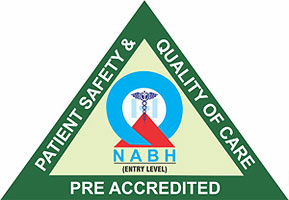+91-7291089674 (Bandra)
+91-7291092120 (Kandivali)




July 5, 2021 | Author: Admin
Our eye is a complex visual organ, comprising of conjunctiva, Iris, Lens and Retina as major parts. Cataracts are cloudy areas that form in the lens, which is normally transparent. They are the main cause of vision loss in people aged over 50 years. Cataract is formed as a result of protein clumping with in the eye lens.
As a result Light does not pass through easily, and vision becomes blurry, like looking through a fogged-up window. The cloudier the lens, the worse the vision will be.
Eye lens has multiple layers, having outermost as the capsule. The layer inside the capsule is the cortex, and the innermost layer is the nucleus. Cataracts are named for their location in the lens; It can be a nuclear cataract, cortical cataract or A posterior sub capsular cataract.
In the United States in 2010, there were 20.48 million cases, rising to 24.41 million in 2015. By 2050, nearly 50 million Americans are expected to have cataracts.
Fortunately, with advancements in medical technology, cataract surgery is now more effective and safer than ever before.
Both traditional and laser-assisted cataract surgeries work to reverse the cataract process by removing the clouded natural lens of the eye and replacing with an artificial lens, known as an IOL.( Intra ocular lens)
In this article, we will highlight the major differences between laser assisted cataract surgery and traditional cataract surgery.
Cataract surgery is one of the most commonly performed procedures in the world and provides excellent results. Surgeons usually operate on one eye at a time, even though cataracts may be present in both eyes.
Cataract surgery is an out-patient basis treatment, allowing you to go home after a short stay at hospital. Traditional cataract surgery also referred to as phacoemulsification and is performed by hand with a ultrasonic phaco equipment. During traditional cataract surgery, eye surgeon will make a small opening on the side of the cornea with the surgical keratome.
The opening is so tiny that it usually does not even require sutures, and the eye tissue heals by itself. An ultrasonic probe is then used to break up the cataract in your eye and the pieces are sucked out through the opening.
An artificial lens is then inserted into your eye where the cataract was. Thus, it is widely accepted as a popular technique for treating cataracts. The process takes only 5 to 10 minutes.
Cataract surgery is aimed for seeing more clearly and new lasers and premium lenses have made it possible to achieve better vision. During laser cataract surgery, the chance of any human error is greatly reduced. In laser cataract surgery, a laser is used to make the incision.
Energy from the laser is used to weaken the cataract. After that just like traditional cataract surgery, an ultrasonic probe is then used to bust the lens into smaller pieces which are then suctioned from the eye and intraocular lens (IOL) is inserted.
It creates a more reliable, repeatable, precise incision than a surgeon can do by hand. Even a very good surgeon can’t make a perfect circle as precisely as a laser can. The laser is useful when a cataract is dense or the opening is difficult to create. Lasers precisely pinpoints the location, depth, and length of incision required, which makes it more effective and free from infection.
Reasons to choose laser cataract surgery over traditional treatment are numerous.
Laser surgery is more accurate having precise dimensions as a result of 3D imaging/map created by the LenSx laser technology. Lasers are found to be providing safer and easier cataract removal.
Patients undergoing laser-assisted treatment needs 45% less ultrasound energy in comparison to conventional cataract treatments.
Laser surgery has the ability to correct astigmatism along with the removal of offending cataract and correct the shape of your cornea as well.
Endothelial cells once damaged in the eye cannot be regenerated. Laser surgery causes less cell damage and maintains the eye health.
As Laser requires less energy to break up the cataract, it is seen that patients experience reduced, post-operative corneal swelling and that leads to faster vision restoration.
Before reaching to any conclusion, schedule an appointment with one of our experts or to know more about our various Laser Eye Treatment options and feel free to contact us at 022 61549999 or visit our clinic at Bandra and Kandivali.